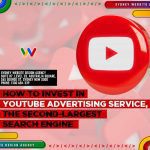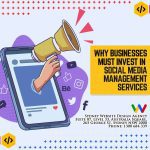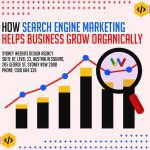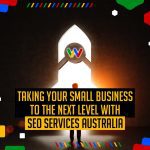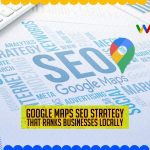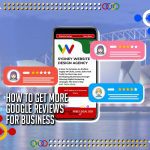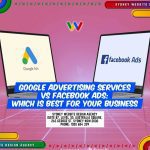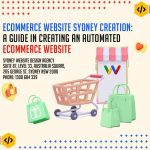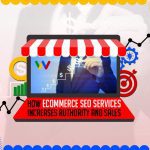Elevate Your Next Marketing Campaign with Content Marketing Examples and Strategies
Content marketing is a great way to build trust and credibility with your audience. It also offers value by providing information or entertainment that is relevant to your target market. This can help to attract new customers and keep current customers engaged.
Introduction
When it comes to content marketing, you want to make sure that you’re creating content that connects with your customers. The best content marketing examples all have something in common – they connect with customers and provide value.
Content marketing is a form of marketing that involves creating and sharing content to connect with customers. This type of marketing can be incredibly effective, as it helps businesses to connect with their customers and provide value. If you’re looking for inspiration for your next marketing campaign, let’s dig deep. In this article, we will also cover nine examples of successful content marketing campaigns that you can use as inspiration.
Table of Contents
- Types of Content that Can be Used in Content Marketing
- How to Create Effective Content for Your Customers
- Tips for Maintaining a Successful Content Marketing Campaign
- Top 9 Examples of Successful Content Marketing Campaigns in Sydney
- The Benefits of Using Content Marketing
- How to Measure the Success of Your Content Marketing Campaign
- Strategies for Creating New and Engaging Content
- Ways to Improve Your Content Marketing Strategy
- FAQs for Content Marketing Examples
- Consistency in Content Marketing for Small Businesses
Types of Content that Can be Used in Content Marketing

There are many types of educational content that can be used to attract and engage with audiences. But, which one help you create a successful content marketing strategy? Here are the different types of content that you can use in your content marketing campaigns.
Blog Post
A blog is an excellent way for a business to tell its story and establish industry credibility. Blogs create two-way conversations with consumers, business partners, and potential purchasers by including a discussion area below the post. This can build the company’s reputation and sales.
Blogging also allows businesses to show off their products and services uniquely. By featuring customer stories and company news, businesses can attract new customers and keep existing ones coming back for more.
2. Social media
As the second most common type of content marketing, social media involves creating and sharing content on social networks such as Facebook, Twitter, LinkedIn, and Pinterest. The goal of social media marketing is to build relationships and interact with potential and current customers.
When used correctly, social media can be a compelling tool. It allows businesses to reach a large audience quickly and easily. Plus, it provides an opportunity to build relationships with customers that can lead to increased sales. User-generated content usually influences social media content. With user-generated content marketing, you can provide exactly what your audiences need, when they need it.
3. Videos
Another creative content marketing example includes videos. Videos are an engaging way to reach and connect both with potential customers and existing customers. In fact, they’re so effective that Cisco predicts that by 2023, online videos will make up more than 80% of all consumer internet traffic.
Creating a video doesn’t have to be complicated or expensive. With a smartphone and a few editing tools, you can create a professional-looking video that showcases your products or services.
4. Emails
Email marketing is one of the oldest types of content marketing, but it’s still going strong. In fact, email is 40 times more effective at acquiring new customers than Facebook and Twitter combined. Although some may see emails as least favourite content marketing examples for content marketing, emails are still considered to be a stable and influential source of new leads and audiences for your brand.
The key to email marketing success is providing value to your subscribers. This can be in the form of helpful tips, exclusive deals, or interesting information. As long as you’re giving your subscribers something they want, you’ll be able to keep them coming back for more.
5. Webinars
Webinars are a type of content marketing that allows businesses to share their expertise with a live audience. They’re usually presented in the form of a lecture or workshop and can last anywhere from 30 minutes to an hour.
Webinars are an excellent way to build trust and credibility with potential customers. By providing useful information, businesses can position themselves as experts in their industry. This can lead to increased sales down the road.
6. E-books
E-books are a popular type of content marketing because they’re easy to create and distribute. They’re also an effective way to build trust and credibility with potential customers.
By providing valuable information, businesses can position themselves as experts in their industry. This can lead to increased sales down the road.
7. White papers
White papers are similar to e-books, but they tend to be more technical in nature. They’re often used by businesses to showcase their expertise on a particular topic.
White papers are an excellent way to build trust and credibility with potential customers. By providing valuable information, businesses can position themselves as experts in their industry. This can lead to increased sales down the road.
8. Infographics
Infographics are a type of content marketing that uses visuals to communicate information. They’re an effective way to explain complex topics in an easy-to-understand format.
Because infographics are so visually appealing, they’re often shared on social media and other websites. This can help businesses reach a wider audience and generate leads.
9. Case studies
Case studies are a type of content marketing that tells the story of how a business solved a problem for a customer. They’re an excellent way to showcase an exciting client achievement to potential customers.
By sharing case studies, businesses can show off their products or services in a real-world setting. This can lead to increased sales down the road.
By providing valuable information, businesses can position themselves as experts in their industry. This can lead to increased sales down the road.
How to Create Effective Content for Your Customers

Knowing your target audience’s needs and desires is critical to producing content that will interest them. Once you’ve figured this out, coming up with a content marketing plan should be simple. However, what exactly should this plan cover? Here are some examples of what other firms in the same line of work are doing, as well as some ideas for how to tilt your next marketing effort.
You must first determine what sort of information your target audience is seeking for. Blogs, infographics, and e-books would all be excellent choices if they’re trying to solve their issues.
Keep your content high-quality and informative, or your target audience will go to someone who can give them what they want. If all they want is entertainment, videos, or podcasts would work just as well.
Having figured out what sort of content your targeted consumers want, it’s time to focus on how you can make yourself unique. With so much “noise” online, it’s essential that yours be the voice they hear.
To cast a wider net, consider using multiple content marketing channels such as social media platforms, email newsletters, or even paid advertisements. Relying on just one method will limit your potential reach and might cause you to miss out on opportunities to get in front of those who are most likely to be interested in what you have to say.
Another approach to stand out is to create evergreen content, which is material that will be relevant and useful long after it’s been published.
If you want your target audience to always see value in what you’re offering, then produce evergreen content. Some examples of this type of content are “how-to” guides, and tips & tricks articles. By having these pieces on your website or blog, readers will know that there’s always something new to learn from you–even if they don’t need it right now.
Another way to make your next marketing campaign more successful is by using user-generated content (UGC). This type of content is created by people who fit your target audience, and it often takes the form of reviews, social media posts, or blog comments.
Using user-generated content (UGC) is a wonderful approach to gain trust and credibility with your target audience, since they’ll be able to see that others have had good experiences with your company. Furthermore, UGC might help you promote your brand organically because it’s likely to be shared by people who find it helpful.
In conclusion, these are just a handful of content marketing examples and strategies that you may utilise to boost your next marketing campaign. You’ll be well on your way to success if you know your target demographic and produce high-quality evergreen material.
Tips for Maintaining a Successful Content Marketing Campaign

Content marketing can be a successful tool for businesses if it is implemented correctly. To maintain a successful content marketing campaign, you need to focus on five core elements: audience personas, brand positioning, owned media value proposition, business case, and an action plan. Let’s take a more in-depth look into these tips for successful content marketing.
Audience Personas
Knowing your target audience is essential to creating effective content. You need to understand their needs, wants, and interests to create content that resonates with them.
Brand Positioning
Your brand’s positioning should be clear and consistent in all of your content. This will help your audience understand what you stand for and what makes you different from other brands.
Owned Media Value Proposition
Your website and other owned media platforms should be used to showcase your content marketing efforts. You can use these platforms to share your content, drive traffic back to your site, and convert leads into customers.
Business Case
Having a documented business case for your content marketing efforts is essential for justifying the investment of time and money into this strategy. It’s important to be able to show how content marketing can help you achieve your business goals.
Action Plan
A detailed action plan is needed to ensure that your content marketing efforts are carried out effectively and achieve the desired results. The action plan should include goals, objectives, strategies, tactics, and timelines.
Top 9 Examples of Successful Content Marketing Campaigns in Sydney

1. The Lorna Jane Active Living Campaign
Lorna Jane is a retailer of women’s activewear and accessories. To promote their brand, they ran a content marketing campaign that focused on providing helpful fitness tips and lifestyle advice. This campaign was successful in building trust and credibility with their audience, and it resulted in an increase in traffic to their website and sales.
Why? Because the brand took time to understand who their target audience is, together with what they need and expect from them as a brand. Thus, their content marketing efforts were formulated and distributed to these audiences more effectively.
2. The Sun-Herald’s “How to Spend Your Weekend” Series
One of the content marketing examples you can consider for your next marketing campaign is this one from Sun Herald. The Sun-Herald is a Sydney-based newspaper that ran a content marketing campaign called “How to Spend Your Weekend.” This series of articles provided readers with information about fun things to do in Sydney over the weekend. The campaign was successful in attracting new readers to the Sun-Herald website, and it helped to increase traffic to the website by 20%.
3. Tourism Australia’s “There’s Nothing Like Australia” Campaign
Tourism Australia ran a successful content marketing campaign called “There’s Nothing Like Australia.” This campaign aimed to promote tourism in Australia by showcasing the country’s natural beauty and diverse culture. The campaign was successful in generating awareness of Australia as a travel destination, and it helped to increase visitor arrivals by 6%. With the right content marketing strategies and high-quality content, a brand can also achieve what Tourism Australia did.
4. The Virgin Group’s “You Can Do It” Campaign
The Virgin Group, a conglomerate of over 400 companies, ran a content marketing campaign called “You Can Do It.” This campaign aimed to inspire people to pursue their dreams and reach their potential. The campaign was successful in motivating people to take action and achieve their goals, and it helped to increase brand loyalty among Virgin customers.
5. P&G’s “Thank You, Mom” Campaign
P&G, a global manufacturer of consumer goods, ran a content marketing campaign called “Thank You, Mom.” This campaign aimed to thank mothers for their support and encouragement. The campaign was successful in generating an emotional response from viewers, and it helped to increase brand awareness and sales for P&G. Together with search engine optimisation and the right content marketing teams to work with, you can also achieve this with your brand.
6. The Sydney Opera House’s “See the Sound” Campaign
The Sydney Opera House ran a content marketing campaign called “See the Sound” to promote their venue. This campaign used video and audio content to show how the Opera House looked and sounded from different parts of the building. The campaign was successful in giving people a new perspective on the Opera House, and it helped to increase ticket sales by 10%. Content marketing ideas like this one can give you better ideas on how to provide your own content for a larger number of prospective customers.
7. Qantas Airways’ “Spirit of Australia” Campaign
Qantas Airways, Australia’s national carrier, ran a content marketing campaign called “Spirit of Australia” to promote tourism in Australia. This campaign featured videos and articles about Australian culture and landmarks. The campaign was successful in generating interest in Australia as a travel destination, and it helped to increase bookings on Qantas flights by 7%. Content creation for what audiences needs, or might look for, similar to what Qantas Airways did can be a great example of what you can do for your content marketing efforts.
8. Ford’s “Go Further” Campaign
Ford, a leading automaker, ran a content marketing campaign called “Go Further” to promote their brand. This campaign featured stories about people who have gone above and beyond to achieve their goals. The campaign was successful in inspiring people to pursue their dreams, and it helped to increase brand awareness and sales for Ford. This type of content marketing examples focuses on customer relationships and how loyal customers can be beneficial for creating a more genuine influencer marketing campaign.
9. Nike’s “Just Do It” Campaign
Nike, a leading manufacturer of sporting goods, ran a content marketing campaign called “Just Do It” to promote their brand. This campaign featured stories about athletes who have overcome adversity to achieve their goals. The campaign was successful in motivating people to pursue their dreams, and it helped to increase brand awareness and sales for Nike.
These are just a few examples of successful content marketing campaigns. If you’re looking to run a content marketing campaign of your own, be sure to keep these examples in mind and learn from them. By following their lead, you can create a campaign that is successful in achieving your desired results.
The Benefits of Using Content Marketing

When it comes to online marketing, content is still king. Why? Because high-quality content can help you attract more website visitors, convert those visitors into leads and customers, and boost your search engine rankings. And when you add powerful calls to action (CTAs) to your content, you can turn one-time visitors into lifelong fans and customers.
So, how can you make sure your content marketing efforts are successful? Have a look at these five benefits of using content marketing:
1. Drive More Traffic to Your Website
One of the main goals of any business’s website is to generate traffic. After all, if no one is visiting your site, it’s pretty hard to generate leads or sales.
One of the best ways to drive traffic to your website is with high-quality content. When you create informative, helpful blog posts, for example, people are more likely to find your site when they search for relevant keywords. And once they’re on your site, you have a chance to convert them into leads and customers.
2. Convert More Visitors Into Leads and Customers
Generating traffic is one thing, but converting those visitors into leads and customers is another. That’s where content is beneficial yet again.
If you want people to act after reading your content (like subscribing to your email list or buying your product), you need to include strong calls to action (CTAs).
Your CTAs should be short, sweet, and to the point. And they should be placed prominently throughout your content, so people can’t miss them.
3. Boost Your Search Engine Rankings
One of the best things about high-quality content is that it can help you boost your search engine rankings. When you include relevant keywords in your titles and throughout your articles, Google and other search engines are more likely to rank your pages higher in the search results.
And when you rank higher in the search results, you’ll generate even more traffic to your website. It’s a win-win!
4. Establish Your Business as an Authority in Your Industry
If you want people to trust your business, you need to establish yourself as an expert in your industry. And one of the best ways to do that is with content marketing.
When you consistently produce high-quality blog posts, for example, people will start to see you as a thought leader in your field. And when they see you as an authority, they’ll be more likely to do business with you.
5. Build Loyalty and Trust With Your Audience
Finally, content marketing can help you build loyalty and trust with your audience. If you provide helpful information and resources regularly, people will come to appreciate and respect your business. Over time, this can turn them into lifelong fans and customers.
How to Measure the Success of Your Content Marketing Campaign

But before we get too far into that, let’s take a step back and look at how to measure the success of your content marketing campaign. After all, if you don’t know how successful your content marketing campaign was, then it becomes difficult to improve upon it for future campaigns.
There are many metrics you can use to measure the success of your content marketing campaign. But which ones you use will depend on what goals you set for your campaign.
Some common goals for content marketing examples include:
- Generating leads
- Increasing brand awareness
- Driving traffic to your website
- Engaging your audience
- Building relationships with customers
- Converting customers into advocates
If your goal was to generate leads, then you would want to look at metrics such as the number of leads generated, the conversion rate of leads into customers, and the cost per lead.
If your goal was to increase brand awareness, then you would want to look at metrics such as website traffic, social media engagement, and number of mentions in the press.
And if your goal was to drive traffic to your website, then you would want to look at metrics such as website traffic, bounce rate, and time on site.
Once you know what goals you set for your content marketing campaign, you can start to measure its success using the appropriate metrics. And if you’re not sure which metrics to use, then we’ve got you covered.
Here are some common content marketing metrics and how to use them:
Website traffic
This metric measures the number of people who visit your website as a result of your content marketing campaign. You can track website traffic using Google Analytics or other web analytics tools.
Bounce rate
This metric measures the percentage of people who leave your website after viewing only one page. A high bounce rate indicates that people are not finding what they’re looking for on your website. You can track bounce rate using Google Analytics or other web analytics tools.
Time on site
This metric measures the average amount of time people spend on your website. A time on site indicates that people are engaged with your website. You can track time on site using Google Analytics or other web analytics tools.
Number of leads generated
This metric measures the number of leads that you generate as a result of your content marketing campaign. You can track the number of leads generated using your CRM system or other lead tracking software.
Conversion rate of leads
This metric measures the percentage of leads that you convert into customers. A high conversion rate indicates that your content marketing campaign is effective at generating leads that are interested in your product or service. You can track conversion rate using your CRM system or other lead tracking software.
Cost per lead
This metric measures the cost of generating a lead through your content marketing campaign. You can calculate cost per lead by dividing the total cost of your content marketing campaign by the number of leads generated.
Number of mentions in the press
This metric measures the number of times your company is mentioned in the press as a result of your content marketing campaign.
You can track mentions in the press using Google Alerts or other media monitoring tools.
Social media engagement
This metric measures the level of engagement you receive on social media platforms as a result of your content marketing campaign. You can track social media engagement using native platform metrics or third-party social media management tools.
These are just some of the most common content marketing metrics that you can use to measure the success of your content marketing campaign. But there are many other metrics that you can use, depending on your goals.
Strategies for Creating New and Engaging Content

The internet is full of content, which means that there is a lot of competition for attention. To get noticed, you need to create content that is new and engaging. Here are some strategies for creating content that will capture attention and keep people coming back for more:
1. Be timely
Keep your finger on the pulse of current events and hot topics in your industry. Then, create content that addresses these topics in a timely manner. This will show that you are up-to-date on what’s happening in your field and that you have something valuable to say about it.
2. Go beyond the basics
Don’t just regurgitate information that everyone already knows. Instead, delve deeper and offer new insights and perspectives. This will make your content more interesting and valuable to readers.
3. Be visual
People are more likely to engage with content that is visually appealing. So, incorporate images, infographics, and other visuals into your posts. This will make your content more engaging and easier to consume.
4. Be personal
Share your experiences and stories in your content to connect with readers on a personal level. This will make your content more relatable and down-to-earth. Work with a marketing team, who understands who your brand to deliver content aligned with what your brand is.
5. Be helpful
Your goal should be to produce content that is useful and helpful to your audience. Whether you’re offering tips, tricks, or advice, make sure that your content is helpful and informative.
By following these strategies, you can create content that is new, engaging, and valuable to your audience. This will help you capture attention and build a loyal following.
Ways to Improve Your Content Marketing Strategy

If you want to take your content marketing to the next level, there are a few key things you can do. Here are some tips for improving your content marketing strategy:
1. Set clear goals
Before you start creating content, it’s important to set clear goals. What do you want to achieve with your content? Do you want to increase brand awareness? Drive traffic to your website? Generate leads? Once you know what your goals are, you can create content that is designed to achieve them.
2. Know your audience
It’s also important to know who your target audience is. What are their needs and wants? What kinds of content would they find valuable? When you understand your audience, you can create content that appeals to them.
3. Plan ahead
Creating quality content takes time and effort. To make the process easier, it’s helpful to plan ahead. Write down ideas for future posts and create an editorial calendar. This will help you stay organised and on track.
4. Promote your content
Once you’ve created some great content, don’t just sit back and wait for people to find it. Promote your content through social media, email marketing, and other channels. The more people see your content, the more likely they are to engage with it.
5. Measure your results
Finally, don’t forget to measure your results. Use analytics to track your progress and see how your content is performing. This will help you fine-tune your strategy and make sure that you’re on the right track.
By following these tips, you can take your content marketing to the next level. By producing quality content and promoting it effectively, you can achieve your goals and build a successful content marketing strategy.
FAQs for Content Marketing Examples
What are some successful content marketing examples to inspire my next campaign?
How can I use video content marketing examples to boost my strategy?
What are some interactive content marketing examples that can inspire creativity?
How can creating blog posts contribute to content marketing success?
Can you share some content marketing examples to inspire my social media strategy?
How can I create content marketing that resonates with my target audiences?
What are some content ideas for an effective email marketing campaign?
How do I maintain a consistent brand image across multiple platforms?
How can customer stories be used in content marketing?
These FAQs should give you a clearer understanding of how to implement successful content marketing examples in your own strategy. From creating blog posts and video content to leveraging interactive content, these tips will help you engage your audience and achieve your business goals across multiple platforms. Use you favorite content marketing examples with other content marketing examples.
Consistency in Content Marketing for Small Businesses

To achieve success with a content marketing strategy, it is important to be consistent with your messaging. This means delivering a clear, unified message across all of your channels. It also means regularly creating and publishing new content.
To create a successful content marketing strategy for your small business, start by creating audience personas. These are fictional representations of your ideal customer. Take the time to really understand what motivates your target customers and what challenges they face. Then, position your brand accordingly. Make sure your messaging is clear and consistent across all of your channels, and that you are regularly publishing fresh content. And lastly, make sure to develop a business case for investing in content marketing. This will help you justify the expense to your boss or client.
With a solid foundation in these core elements for content marketing, you can create a successful and effective content marketing strategy for your small business.











